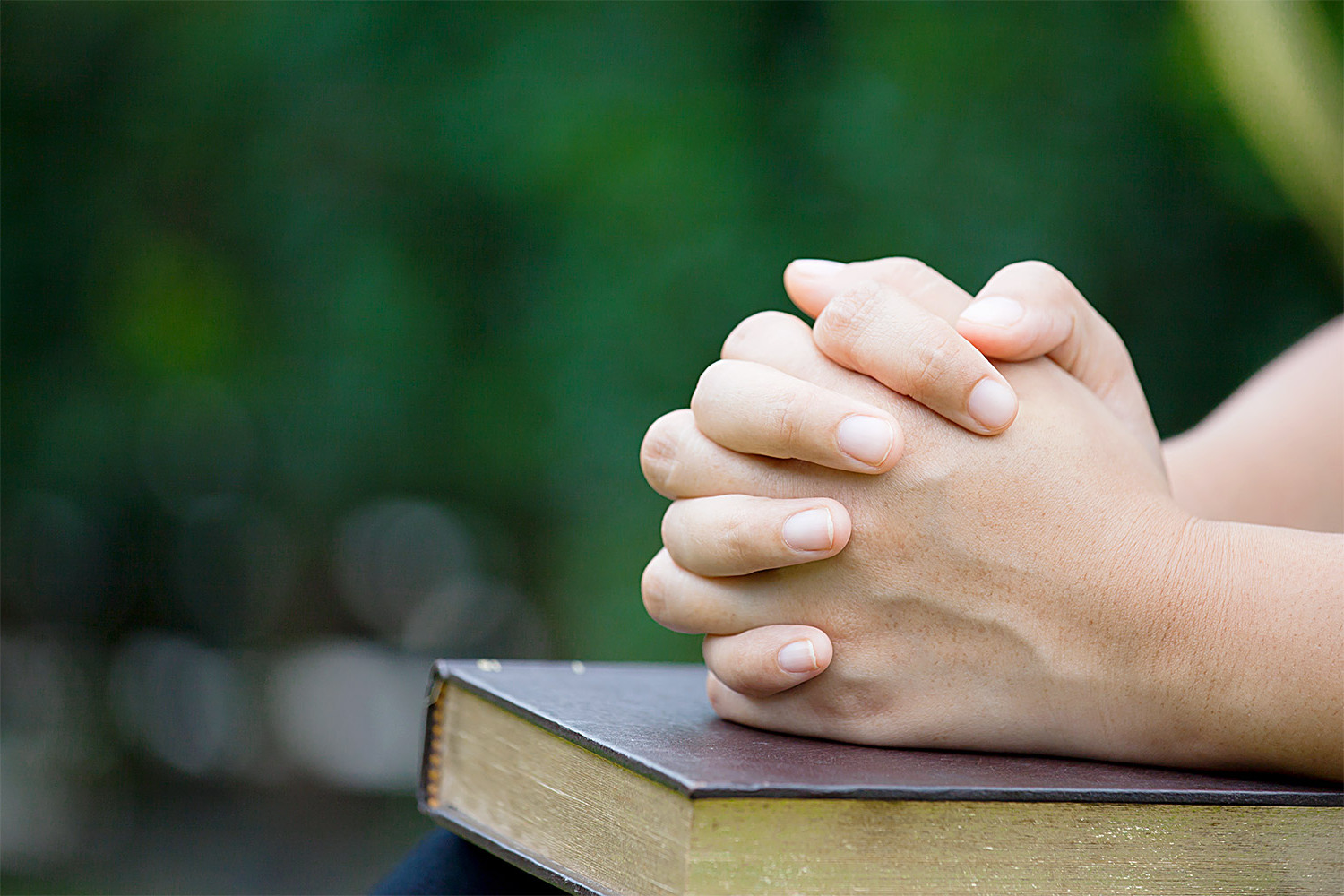
Prayer has been a cornerstone of human culture for centuries, transcending borders and beliefs. But what makes this ancient practice so enduring? Prayer offers a unique blend of spiritual connection, mental clarity, and emotional relief. Whether whispered in solitude or chanted in unison, it serves as a bridge between the mundane and the divine. From ancient rituals to modern-day meditations, prayer adapts to fit the needs of its practitioners. Curious about the many facets of this timeless tradition? Here are 50 intriguing facts that will deepen your understanding and appreciation of prayer.
The Origins of Prayer
Prayer has been a fundamental part of human culture and spirituality for millennia. Its roots stretch back to ancient civilizations and continue to be a vital practice in modern times.
-
The earliest recorded prayers date back to ancient Mesopotamia around 3000 BCE. These prayers were often inscribed on clay tablets.
-
In ancient Egypt, prayers were integral to daily life and were often directed to gods like Ra and Osiris.
-
Hinduism, one of the oldest religions, has a rich tradition of prayer, including mantras and hymns found in the Vedas, dating back over 3,000 years.
-
The Jewish Shema, a central prayer in Judaism, can be traced back to the Torah, specifically the Book of Deuteronomy.
-
Early Christians adopted Jewish prayers and added new ones, such as the Lord's Prayer, taught by Jesus to his disciples.
Different Forms of Prayer
Prayer can take many forms, from silent meditation to loud, communal recitations. Each form serves a unique purpose and reflects the diversity of human spirituality.
-
Silent prayer, often practiced in meditation, allows individuals to connect with their inner selves and the divine without spoken words.
-
Chanting is a form of prayer found in many religions, including Buddhism and Hinduism, where repetitive sounds or phrases are used to focus the mind.
-
Liturgical prayers are structured prayers recited during religious services, common in Christianity, Judaism, and Islam.
-
Intercessory prayer involves praying on behalf of others, asking for divine intervention in their lives.
-
Thanksgiving prayers express gratitude for blessings received and are found in many religious traditions.
The Role of Prayer in Different Religions
Prayer is a universal practice, but its role and significance can vary greatly across different religions.
-
In Islam, prayer (Salah) is one of the Five Pillars and is performed five times a day facing Mecca.
-
Buddhist prayers often involve reciting sutras or mantras to cultivate mindfulness and compassion.
-
In Christianity, prayer is a way to communicate with God, seek guidance, and express worship.
-
Hindu prayers can be directed to various deities and often involve rituals, offerings, and recitations of sacred texts.
-
Sikhism emphasizes prayer as a means to remember God and live a truthful life, with daily prayers like Japji Sahib.
Scientific Perspectives on Prayer
While prayer is a spiritual practice, it has also been the subject of scientific study, exploring its effects on the human mind and body.
-
Studies have shown that prayer can reduce stress and anxiety by promoting a sense of calm and relaxation.
-
Research suggests that prayer can improve mental health by providing a sense of purpose and connection.
-
Some studies indicate that prayer can have positive effects on physical health, such as lowering blood pressure.
-
The placebo effect may play a role in the perceived benefits of prayer, where belief in its power can lead to real improvements.
-
Neuroscientific research has found that prayer activates areas of the brain associated with empathy, compassion, and emotional regulation.
Famous Prayers and Their Impact
Throughout history, certain prayers have gained widespread recognition and have had a profound impact on cultures and societies.
-
The Lord's Prayer, taught by Jesus, is one of the most well-known Christian prayers and is recited by millions worldwide.
-
The Serenity Prayer, often used in addiction recovery programs, emphasizes acceptance, courage, and wisdom.
-
The Gayatri Mantra, a revered Hindu prayer, is chanted for enlightenment and spiritual awakening.
-
The Jewish Kaddish is a prayer of mourning, offering comfort and hope to those grieving.
-
The Islamic Dua is a personal supplication to Allah, seeking guidance, forgiveness, and blessings.
Prayer in Modern Society
In today's fast-paced world, prayer continues to be a source of solace and strength for many people.
-
Online prayer groups and communities have emerged, allowing people to share prayers and support each other virtually.
-
Prayer apps and websites offer resources for guided prayers, meditation, and spiritual growth.
-
Many hospitals and healthcare facilities provide chaplaincy services, recognizing the importance of prayer for patients' well-being.
-
Interfaith prayer services promote unity and understanding among people of different religious backgrounds.
-
Prayer vigils are often held in response to tragedies, offering a way for communities to come together and find hope.
The Power of Personal Prayer
Personal prayer is a deeply intimate practice that allows individuals to connect with the divine on their own terms.
-
Journaling prayers can help individuals articulate their thoughts and feelings, providing clarity and insight.
-
Creating a personal prayer space at home can enhance the experience, offering a dedicated place for reflection and meditation.
-
Prayer walks, where individuals pray while walking, combine physical activity with spiritual practice.
-
Using prayer beads, like rosaries or malas, can help focus the mind and keep track of prayers.
-
Setting aside specific times for prayer each day can establish a routine and deepen one's spiritual practice.
Cultural Expressions of Prayer
Prayer is not just a religious practice; it is also a cultural expression that reflects the values and traditions of different societies.
-
In Japan, Shinto prayers are often offered at shrines, accompanied by rituals like clapping and bowing.
-
Native American prayers often involve nature, seeking harmony with the earth and its elements.
-
African traditional religions incorporate prayer into ceremonies, dances, and music, celebrating community and ancestors.
-
In Celtic traditions, prayers are woven into daily life, blessing activities like farming, cooking, and traveling.
-
Tibetan prayer flags are inscribed with prayers and mantras, believed to spread blessings as the wind blows.
The Future of Prayer
As society evolves, so does the practice of prayer. New forms and expressions continue to emerge, reflecting the changing needs and beliefs of people.
-
Virtual reality prayer experiences are being developed, offering immersive environments for meditation and worship.
-
Interfaith prayer initiatives are growing, fostering dialogue and cooperation among different religious communities.
-
Environmental prayers focus on the planet's well-being, reflecting a growing awareness of ecological issues.
-
Mindfulness and meditation practices, often secular in nature, incorporate elements of prayer and spirituality.
-
Personalized prayer services, where individuals can request specific prayers or blessings, are becoming more popular.
Prayer and Social Change
Prayer has often been a catalyst for social change, inspiring movements and actions that shape history.
-
The Civil Rights Movement in the United States was deeply rooted in prayer, with leaders like Martin Luther King Jr. drawing strength from their faith.
-
Gandhi's practice of prayer and fasting played a crucial role in India's struggle for independence.
-
Prayer vigils and marches have been organized worldwide to advocate for peace, justice, and human rights.
-
Many humanitarian organizations incorporate prayer into their work, seeking divine guidance and support for their missions.
-
Prayer can empower individuals and communities to take action, fostering a sense of hope and resilience in the face of challenges.
The Power of Prayer
Prayer has been a cornerstone of human experience for centuries. It transcends cultures, religions, and personal beliefs, offering a way to connect with something greater. Whether seeking comfort, guidance, or expressing gratitude, prayer provides a unique space for reflection and hope.
Scientific studies have shown that prayer can reduce stress and promote mental well-being. It's not just about the spiritual aspect; the act of praying can foster a sense of community and belonging. People often find solace in knowing they're part of a larger narrative.
Incorporating prayer into daily life can be as simple as a moment of silence or a heartfelt conversation with a higher power. The beauty of prayer lies in its versatility and personal nature. It’s a practice that can adapt to fit anyone's needs, making it a timeless and universal tool for inner peace and connection.
Was this page helpful?
Our commitment to delivering trustworthy and engaging content is at the heart of what we do. Each fact on our site is contributed by real users like you, bringing a wealth of diverse insights and information. To ensure the highest standards of accuracy and reliability, our dedicated editors meticulously review each submission. This process guarantees that the facts we share are not only fascinating but also credible. Trust in our commitment to quality and authenticity as you explore and learn with us.


